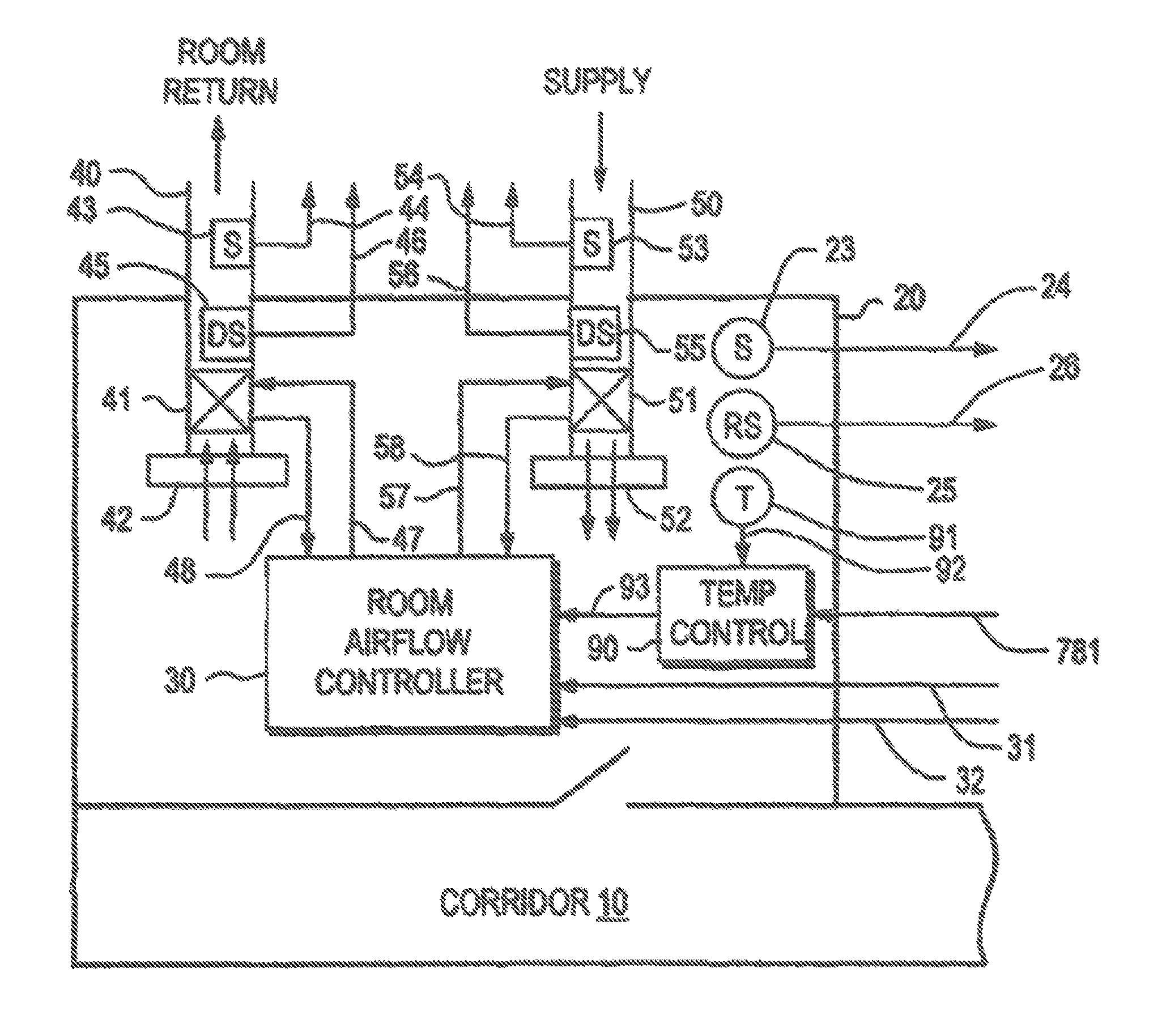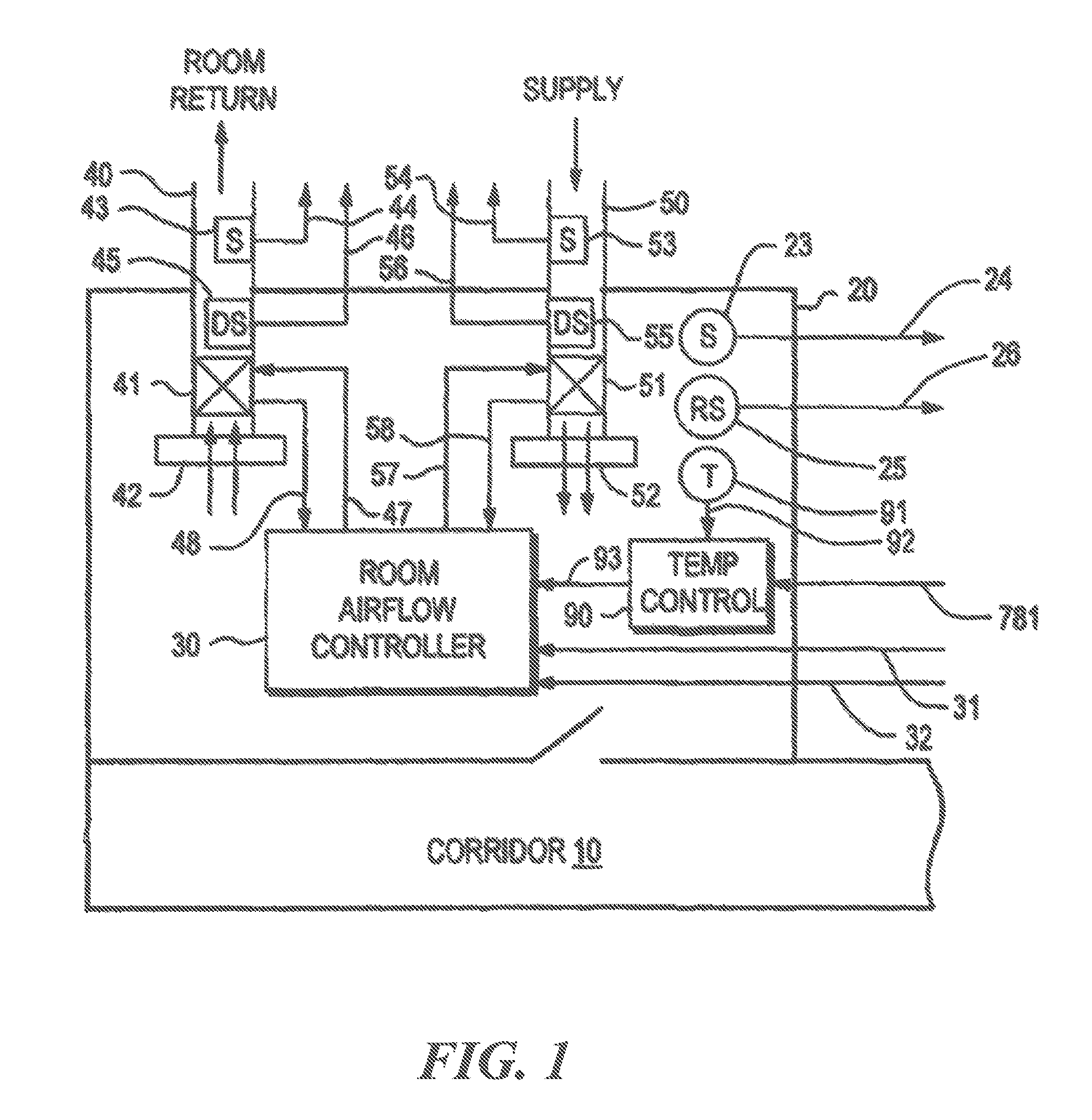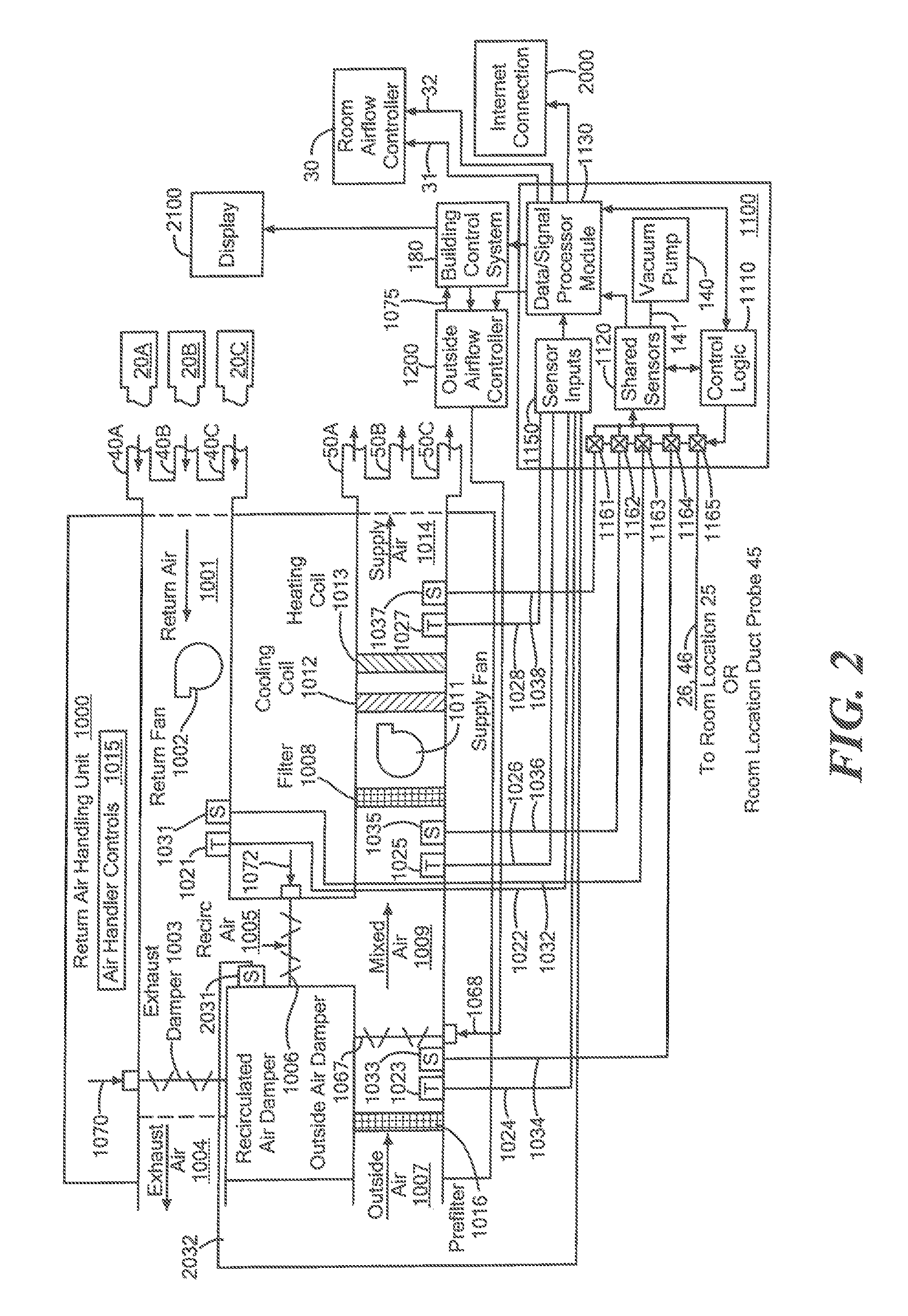Methods and apparatus for indoor air contaminant monitoring
a technology of indoor air and contaminant, applied in the direction of instruments, heating types, ventilation systems, etc., can solve the problems of increasing the sensed air contaminant level in the controlled room or space, increasing the cost of laser and detector systems that are centralized, and increasing the level of air contaminants that are not being properly diluted, so as to improve indoor air quality, reduce airflow, and increase ventilation
- Summary
- Abstract
- Description
- Claims
- Application Information
AI Technical Summary
Benefits of technology
Problems solved by technology
Method used
Image
Examples
Embodiment Construction
[0048]FIG. 1 show a typical monitored environment or room 20 that has doors that may enter a corridor 10 that may also be monitored. Although the diagrams show one room and a corridor, it is understood that exemplary embodiments of the invention may be used with just one room or space or monitored area, or any plurality of rooms or spaces including corridors or other adjacent spaces that are also being monitored, such as for example, two or more rooms, or one corridor plus one or more spaces. Note also that, although the illustrative environments are enclosed within walls, monitored environments, spaces or areas may also comprise a section or area of a room having no walls or partitions around it. Thus, there may be multiple monitored environments within one physical room. Alternatively, multiple physical rooms may also constitute one environment or space. Typically, the environment 20 will also be an area that is fed by one or more supply airflow control devices 51. Potentially a r...
PUM
| Property | Measurement | Unit |
|---|---|---|
| sampling time | aaaaa | aaaaa |
| time | aaaaa | aaaaa |
| particle size | aaaaa | aaaaa |
Abstract
Description
Claims
Application Information
 Login to View More
Login to View More - R&D
- Intellectual Property
- Life Sciences
- Materials
- Tech Scout
- Unparalleled Data Quality
- Higher Quality Content
- 60% Fewer Hallucinations
Browse by: Latest US Patents, China's latest patents, Technical Efficacy Thesaurus, Application Domain, Technology Topic, Popular Technical Reports.
© 2025 PatSnap. All rights reserved.Legal|Privacy policy|Modern Slavery Act Transparency Statement|Sitemap|About US| Contact US: help@patsnap.com



